Study ties phosphorus loading in lakes to extreme precipitation events
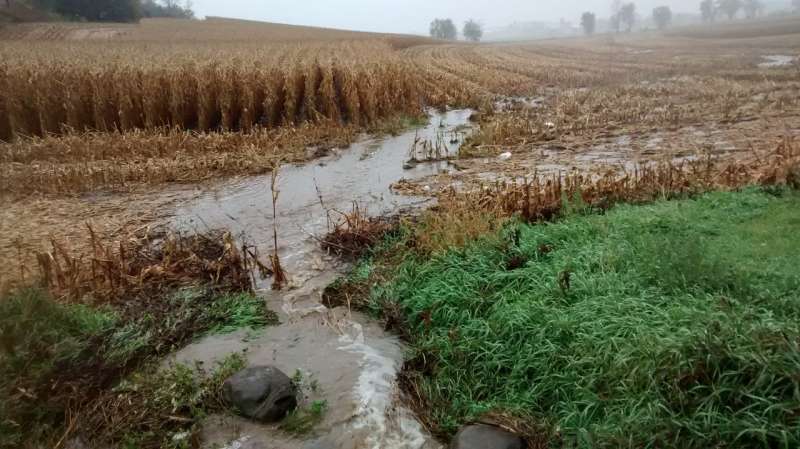
While April showers might bring May flowers, they also contribute to toxic algae blooms, dead zones and declining water quality in U.S. lakes, reservoirs and coastal waters, a new study shows.
In the Midwest, the problem is largely due to phosphorus, a key element in fertilizers that is carried off the land and into the water, where it grows algae as easily as it grows corn and soybeans.
Previous research had found that waterways receive most of their annual phosphorus load in only a dozen or two events each year, reports Steve Carpenter, director emeritus of the University of Wisconsin-Madison's Center for Limnology and lead author of a new paper published online in the journal Limnology and Oceanography.
The paper ties those phosphorus pulses to extreme rain events. In fact, Carpenter says, the bigger the rainstorm, the more phosphorus is flushed downstream.
Carpenter and his colleagues used daily records of stream discharge to measure the amount of phosphorus running into Lake Mendota in Madison, Wisconsin, from two of its main tributaries.
The dataset spanned a period from the early 1990s to 2015. The scientists then looked at long-term weather data and found that big rainstorms were followed immediately by big pulses of phosphorus.
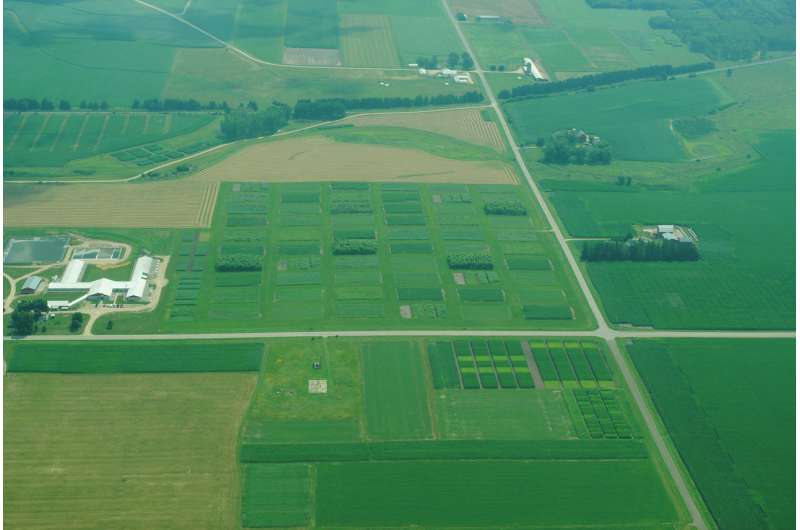
The researchers reviewed stream data from the same period, when seven of the 11 largest rain storms since 1901 occurred.
"This is an important example of how changes in one aspect of the environment, in this case precipitation, can lead to changes in other aspects, such as phosphorus load," said Tom Torgersen, director of the National Science Foundation's (NSF) Water, Sustainability and Climate program, which, along with NSF's Long-Term Ecological Research (LTER) program, funded the research.
Added David Garrison, chair of NSF's LTER Working Group, "This study's findings, which depend on long-term data, are important to maintaining water quality not only today, but into the future."
Carpenter agreed. "Without long-term data, this research would never have happened." The next steps, he said, need to include new strategies for managing nutrient runoff.
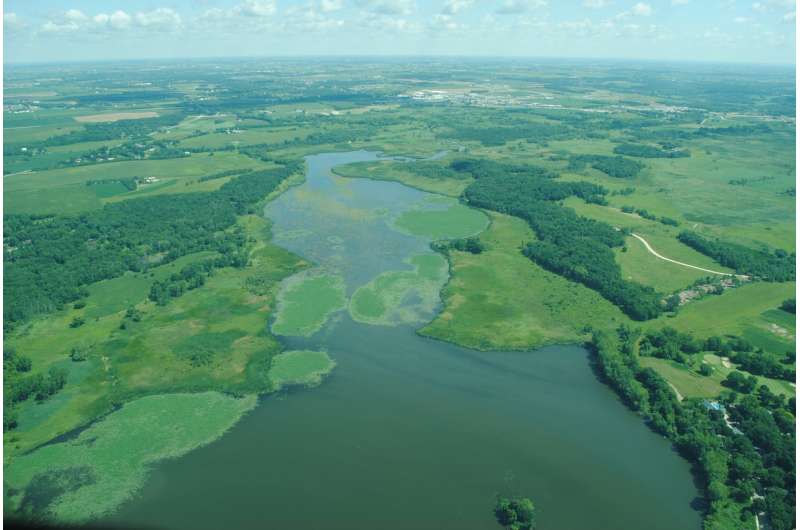
Farmers and conservation groups now use several strategies to try to slow water down and capture some of the sediment and fertilizer it carries as it runs off a field. "But we're not going to solve the problem with buffer strips or contour plowing or winter cover crops," said Carpenter. Although those practices all help, he said, "eventually a really big storm will overwhelm them."
The best available option for protecting water quality is to keep excess phosphorus off the landscape, Carpenter said. "A rainstorm can't wash fertilizer or manure downstream if it isn't there."
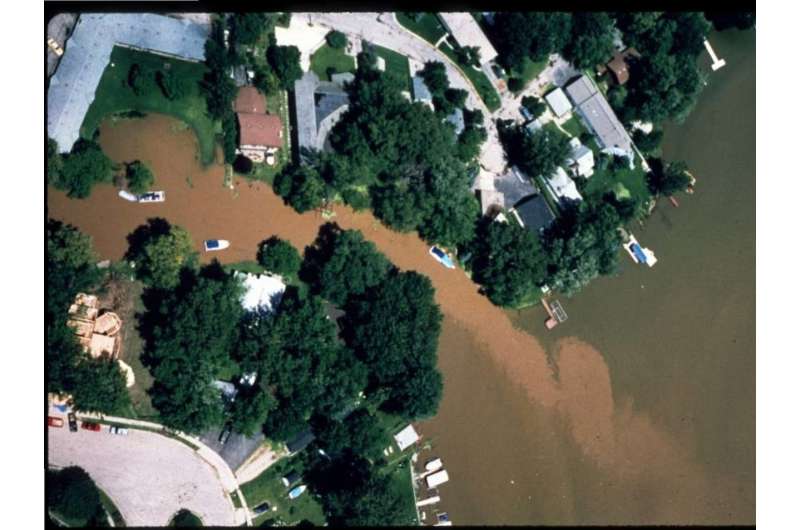
Carpenter noted that while there are countless acres in the Midwest that are oversaturated with phosphorus, there are also places that aren't. And that, he said, "is an encouraging sign. Some farmers are having success in decreasing their soil phosphorus, and we could learn from them."
Added John Schade, an NSF LTER program director, "This analysis clearly shows that extreme rainfall is responsible for a large amount of the phosphorus that flows into inland waters. Now, we need to develop nutrient management strategies to meet the challenge. Without long-term data like those presented here, the impact of these events would be difficult to assess."
-
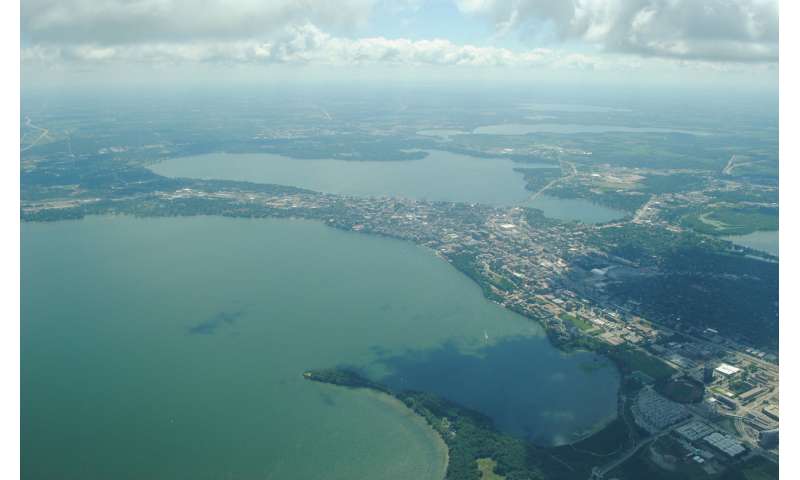
Aerial view of Lake Mendota covered with a bloom of cyanobacteria in summer. Credit: Eric Booth -
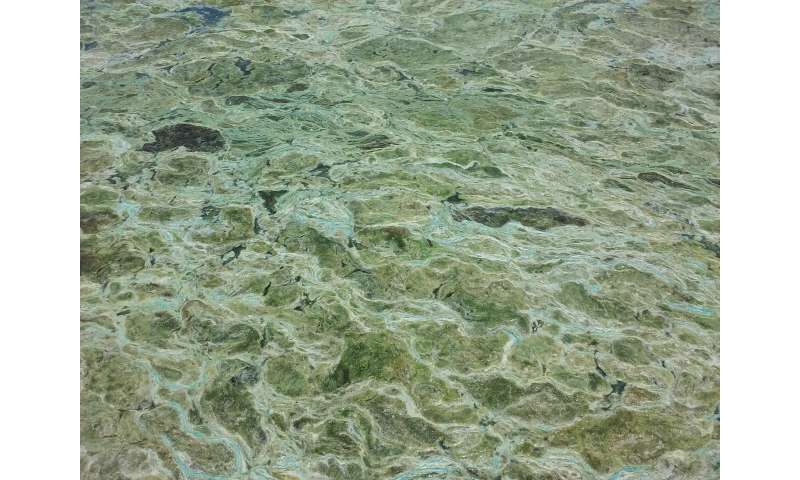
Lake-level look at a bloom of cyanobacteria. Credit: Steve Carpenter
More information: Stephen R. Carpenter et al. Extreme precipitation and phosphorus loads from two agricultural watersheds, Limnology and Oceanography (2017). DOI: 10.1002/lno.10767
Provided by National Science Foundation



















